Chris Baty's Blog, page 88
November 28, 2018
30 Covers, 30 Days 2018: Day Twenty-Eight
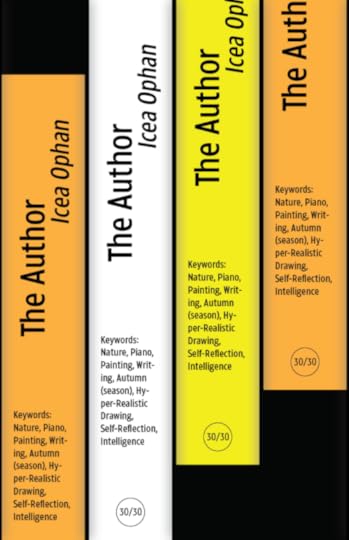
Every November, during National Novel Writing Month, thirty professional designers volunteer to create book cover art inspired by novels being written by aspiring authors from around the globe. Why? To encourage new, diverse voices, and help build a more creative world.
30 Covers, 30 Days is presented in partnership with designer and author Debbie Millman. Read more about these NaNoWriMo 2018 novels-in-progress, and the cover designers, below.
The AuthorAn Experimental novel being written this November by NaNo participant Icea Ophan in the United States.
Faoiltiama: she is different, she is aware. She is part of some undefined larger part of this world. There is so much in her head, so much that spills out of her in music, words, drawings, and ideas. She has become lost, unable to find herself, drowning not in her own ideas, but in the harshness of the world. So she escapes into the woods behind her house. Women of wolves, she finds her way. She is determined to be the author of her own story, though poems, classical music composition and art she becomes Faoiltiama. Her story told through poems and viewed from a distant and all-knowing vantage point.
“Dappled sunlight streams down from trees up high;
Snowflakes adorn: stem and leaf and petal;
Birds sing with joy then, on feathered wings: fly;
Minute haven now found, my mind settles.
Snow melts, cascading: icy flow below;
Crisp air, timid breeze: the sky seems to breathe;
Sunlit snow pools ‘neath a weeping willow;
Fragile flowers encased in icy sheathes.
Inspiration surrounds, my mind abound;
Now in my head: music, notes unconfined;
Nature: simple influence, so profound;
Sound caught, everlasting now: I rewind.
I’m the budding leaves: rustling in the breeze;
I’m the melted snow: crashing to the seas.”
Stay tuned for new covers every day of the month!
I want to mention there is a Feedback Form open now that will allow you to send in your valuable comments, concerns, suggestions, and more about the 30 Covers, 30 Days program.
Cover Designed by Ksenya Samarskaya Ksenya Samarskaya is a strategist and creative practitioner, fascinated with the nuances inherent in our visual and literary culture. Samarskaya has served on the board of AIGA/NY, and judged design competitions including Communication Arts, TISDC, TDC, and the SoTA Catalyst Award. She currently splits her time between Brooklyn, NY and Barcelona, Spain where she teaches at Harbour.Space University. Follow her on Twitter, Medium, and Instagram at @samarskaya and at samarskaya.com.
Ksenya Samarskaya is a strategist and creative practitioner, fascinated with the nuances inherent in our visual and literary culture. Samarskaya has served on the board of AIGA/NY, and judged design competitions including Communication Arts, TISDC, TDC, and the SoTA Catalyst Award. She currently splits her time between Brooklyn, NY and Barcelona, Spain where she teaches at Harbour.Space University. Follow her on Twitter, Medium, and Instagram at @samarskaya and at samarskaya.com.
November 27, 2018
3 Lessons a Writing Educator Learned from NaNoWriMo
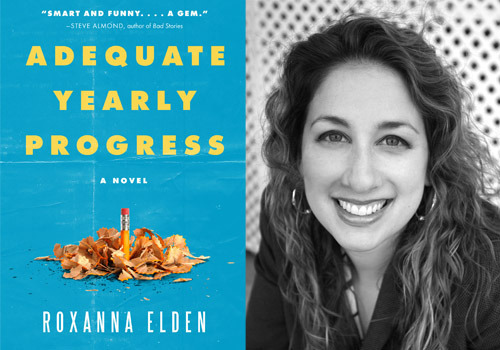
In addition to the main event every November, NaNoWriMo provides free creative writing resources to educators and young participants around the world through our Young Writers Program. Want to help support our young writers? Donate through our Support a Classroom program!
Today, educator Roxanna Elden shares how leading her students through NaNoWriMo helped her write and publish her own novel:
Dear teachers,
This year’s National Novel Writing Month feels like a bit of an anniversary—doing the classroom-friendly version of the challenge with my students led to the first draft of Adequate Yearly Progress, my recently-released workplace novel about teaching. (It’s like “The Office,” but set in an urban high school.) For years, I’d been bribing high-schoolers to participate each fall, promising them extra credit and pizza parties. Finally, one of them said, “How about you, Ms. Elden? Are you going to write a novel?”
There’s probably no better way to get a teacher to start a writing project.
What I didn’t expect, however, was how much this challenge would change my approach to other pursuits. The experience that started at midnight on November 1, 2009, when I sat in front of my computer still wearing parts of a haphazard Halloween party costume, taught me lessons that would forever influence both my writing and my teaching. Here are a few of them.
1. The sprint-style challenge isn’t just for writing goals.NaNoWriMo’s built-in timeline forced me to bang out an awful draft in one month. When it came time to revise, however, the same approach was still helpful. Each of the nearly thirty rounds of revision started with a short-term deadline on the calendar. Being a teacher helped with this, too. Teachers are busy, but we’re also used to mapping out our time according to the school year’s natural rhythms. Want to mark up a draft before you have to grade midterms? There’s a due date for that. Need to finish a summer rewrite with time to plan for the school year? Hello, mid-August endpoint. Blocking out curriculum milestones can help teachers find time for their own creativity. And it works the other way, too: penciling in creative goals can help teachers plan ahead in more detail.
2. It helps to have a system for capturing ideas—no matter when they hit.A common piece of writing wisdom is that once you’ve started a project, your brain works on it even when you’re not in front of computer. This was especially true as a teacher writing a school-based novel: sparks of ideas came to me unexpectedly, while sitting through a test-prep pep rally, or seeing how students reacted when a cockroach crawled through the classroom. My initial strategy of writing these ideas on sticky notes led to a pile of un-typed notes with no real plan for how to use them. Eventually, I set up a secret email address to use only for book-related ideas. Any time an idea came to me, I’d type it into the subject line of an email and send it to that address, leaving it unopened until I had time to give it my full attention. Later, I started using a similar system to capture teaching ideas. After all, just like writers, teachers have some of their biggest “Aha!” moments at inconvenient times.
3. If you teach language arts, you probably already know how to read like a writer.As an English teacher, I learned to use excerpts of “mentor texts” to help students emulate great writing. Once I started working on my novel I did a more extended version of this, shelving books on Goodreads based on what I admired about them. Not only did this help with the book, it made me feel like the message I’d been repeating to students over the years was actually true: If you pay close attention, you can reverse-engineer much of what you love about another author’s writing. It’s also useful a useful exercise to knock out a rough draft quickly, even on a shorter assignment.
Trying to get students to revise their work thirty times, though? Not so successful.
Roxanna Elden combines eleven years of experience as a public school teacher with a decade of speaking about education issues. Her first book, See Me After Class: Advice for Teachers by Teachers, is a staple in school districts and educator training programs throughout the country. Her recently released workplace novel, Adequate Yearly Progress, captures teaching with humor, insight, and heart.
30 Covers, 30 Days 2018: Day Twenty-Seven
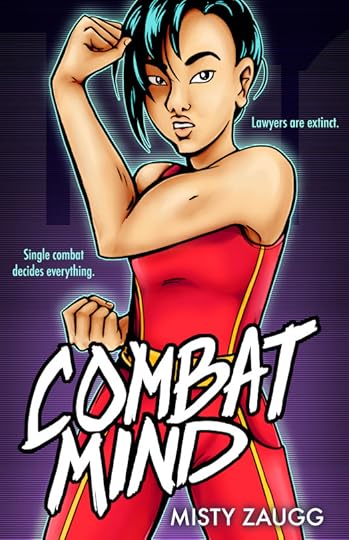
Every November, during National Novel Writing Month, thirty professional designers volunteer to create book cover art inspired by novels being written by aspiring authors from around the globe. Why? To encourage new, diverse voices, and help build a more creative world.
30 Covers, 30 Days is presented in partnership with designer and author Debbie Millman. Read more about these NaNoWriMo 2018 novels-in-progress, and the cover designers, below.
A Science Fiction novel being written this November by NaNo participant Misty Zaugg in the United States.
Lawyers are extinct. Single combat decides everything.
The city has a stranglehold on all tech still possible, centuries after the world was destroyed. The five families oversee gang boss dictators who rule the outskirts in a surprisingly stable society … as long as you toe the line.
Kiriai is poised to win the upcoming battle that will cement her position as a scrapper in her local hood’s fighting elite, when she overhears vague details about an assassination plot against the boss. She struggles to develop her fighting skills under the tutelage of an ancient RPG virtual sensei while at a loss for what type of inherited talent her grandfather keeps hinting she might have.
Why couldn’t her life just be easy?
Cover designer Wesley Sueker had this to say about the design process:
First things first, I always sketch a few thumbnails (teeny tiny two-minute tests) to find The Vibe. Some visual themes usually arise from that, so I write down anything that comes to mind while I’m drawing. They inevitably help when looking for reference pictures too—keywords for Combat Mind included “Street Fighter II”, “1980s new wave”, “crappy kung fu movies”, and “cool ready-to-kick-butt-when-necessary poses”.
Once I have a general idea of The Vibe, I start hoarding references and inspiration like a packrat. Basically I just type my keywords into Google Images and save anything I remotely like to a dedicated folder. I also like making quick playlists to get me in the mood (“Sweep the Leg” by No More Kings quickly became Combat Mind’s unofficial theme song. Highly recommended listening).
From there, I try out some looks from my references by doing some more thumbnails, and when I think I’m onto something good, I ignore it and do three more thumbnails that inevitably turn out better. Then I’m done! At least, done with the fun part. Then comes the actual work part, which is basically ten hours of trial and error.“
Wesley also included a text-free version of the cover:

Stay tuned for new covers every day of the month!
I want to mention there is a Feedback Form open now that will allow you to send in your valuable comments, concerns, suggestions, and more about the 30 Covers, 30 Days program.
Cover Designed by Wesley Sueker
Local artist Wesley Sueker enjoys reading, trivia, and short walks on the beach immediately followed by ice cream. He is currently studying philosophy at UC Berkeley. His right-hand man is his boyfriend Sean, his left-hand man his Basset hound Milo, both instrumental to his creative process. Lately he’s been spending more energy flexing his artistic muscles–you can view the fruits of those flexes on his deviantArt page.
November 26, 2018
Pro Tips from a NaNo Coach: You’ve Got Nothing to Lose

NaNoWriMo can seem like a daunting task sometimes, for NaNo newbies and veterans alike. Fortunately, author Destiny Soria is here to share her advice on how to overcome any obstacles in your way as you write toward the end of the month:
It’s the last week of November. A mere three weeks ago we set out on this journey together, eyes bright and hearts full of hope. We spent hours snuggled on the couch, hunched over a desk, flopped on the bed, or crammed on the train, weaving the words inside us into new worlds. We served our time imprisoned by the blank page, wondering idly if it was too late to give up this writing thing altogether and become a pea farmer. We reaped our reward from countless sprints as we watched that word count go up, up, up. We laughed at our own jokes, wept at our own tragedies, and grinned in gleeful malice as we put our characters through tortures and embarrassments that would make even the worst super-villain shudder.
Right now you are feeling like a conquering hero, an abject failure, or something in between. But in this final week of the most harrowing—err, exciting—month of the year, every single one of us on this journey has one thing in common:
There’s nothing to lose.
You heard me. It’s time to take off the training wheels. Time to throw caution to the wind. Let’s end this journey not with a whimper, but with a cataclysmic bang.
Have you already wrapped up your plot and are just tying up the loose ends? That’s awesome, but don’t you think it’d be awesomer if the defeated antagonist suddenly rose from the grave? Or if a jilted lover suddenly appeared out of nowhere? Or if that key piece of evidence that neatly ties up your murder mystery is proven false?
Are you floundering around somewhere in the middle of the story, trying to make your way to a climax that never seems to materialize? Someone needs to get stabbed. Someone needs to confess their undying love. Someone needs to vanish without a trace. Bring on the dragons and the spaceships and the long-lost-relatives. It doesn’t need to make sense. It doesn’t even need to be good. No one is reading this but you and the secret government agents monitoring your computer (ooh, there’s another plot twist for you). The last week of November is no time for elegance. Those bright eyes and bushy tails of November 1 are long past. We are the haggard few, nursing our wounds and caffeine addictions while dragging ourselves toward an impossible finish line.
“And here’s the best part: that finish line never expires. A novel is a novel, whether you finish it on November 30, 2018, or ten years from now.”The beautiful thing about November is that once it ends, there are eleven more months that follow, and those are the months for editing, for deleting all the stuff that doesn’t make any sense, for fixing that ridiculous plot point that you wrote at 3:00 a.m. just because it seemed funny at the time. Those are the months for taking a pen or a paring knife or a sledgehammer to your manuscript and reshaping each word until every sentence sings. And trust me, when the time comes, you’re going to do great.
But until then, there is only you and that finish line (and the secret government agents). That beautiful, impossible, infuriating 50,000 words. Nothing to lose and everything to gain. And here’s the best part: that finish line never expires. A novel is a novel, whether you finish it on November 30, 2018, or ten years from now. So keep going. I promise it’s worth it.
Destiny Soria lives and works in the shadow of the mighty Vulcan statue in Birmingham, AL. She is the author of Iron Cast, which features magic and mobsters in 1920s Boston, and Beneath the Citadel, a fantasy epic about ancient seers, stolen memories, and a failed rebellion.
30 Covers, 30 Days 2018: Day Twenty-Six
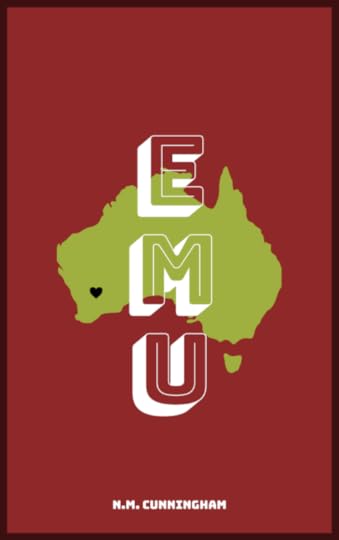
Every November, during National Novel Writing Month, thirty professional designers volunteer to create book cover art inspired by novels being written by aspiring authors from around the globe. Why? To encourage new, diverse voices, and help build a more creative world.
30 Covers, 30 Days is presented in partnership with designer and author Debbie Millman. Read more about these NaNoWriMo 2018 novels-in-progress, and the cover designers, below.
EmuA Historical novel being written this November by NaNo participant N.M. Cunningham in Australia.
One woman, two men, two Lewis guns and twenty thousand emus, what could possibly go wrong? Outback governess and enthusiastic bird watcher, Grace Albright, finds herself at odds with Sergeant Charlie McKenna of the Seventh Heavy Battery of the Royal Australian Artillery when the government enlist the army to help with an emu cull, dubbed the ‘Great Emu War’. What was supposed to be a simple job for Charlie, turns out to be a disaster of ornithological proportions, one where feathers fly, young leave the nest and a ritual courtship dance is not enough to win over a bluestockinged bird lover.
Cover designer Nick Fierro shared a few alternate versions of Emu:
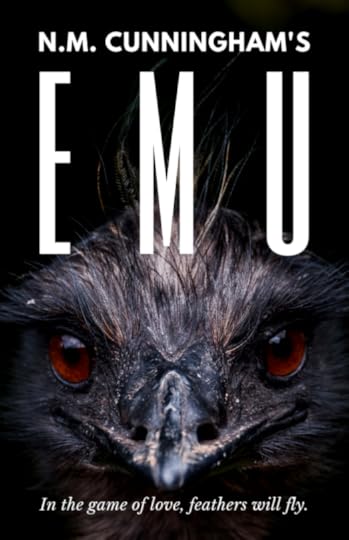
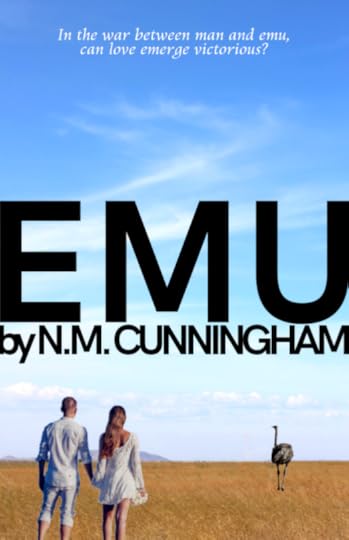

Cover designer Nick Fierro had a few notes on these covers:
“I never expected that designing a cover for a novel about the Emu Wars of the 1930s would be so complicated. But there’s a lot of elements at play in a story like this, and it really jumped out at me. In fact, I chose it as an option for designers a few times before plucking it for myself as a challenge. I wanted to capture the intensity of war, the passion of romance, and the strangeness of emus in a single cover, but it took me a few tries to settle on one I really liked. In my head I pictured something like the poster for the 2008 movie Australia, but (aside from a hastily edited MS Paint file I won’t share here) the end result was something a little less … epic – one that I hoped would be a little understated but capture enough of the story to pull the reader in.“
Stay tuned for new covers every day of the month!
I want to mention there is a Feedback Form open now that will allow you to send in your valuable comments, concerns, suggestions, and more about the 30 Covers, 30 Days program.
Cover Designed by Nick Fierro
Nick Fierro is not an expert graphic designer by any means; however, like many things, he’s working on it. He is the Editorial & Programs Intern at NaNoWriMo HQ, and he’s coordinated the program during the last several weeks. If you’ve gotten an email or message about your novel being selected for a cover, it was him you heard from. He hopes you’re all having a fantastic November.
When he’s not bringing baked goods into the NaNo office, he’s working as a freelance writer, volunteering in his community, reading, and enjoying the fine food and drink of his native North Bay.
November 25, 2018
30 Covers, 30 Days 2018: Day Twenty-Five
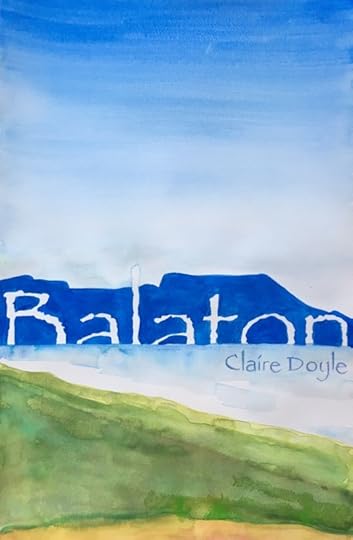
Every November, during National Novel Writing Month, thirty professional designers volunteer to create book cover art inspired by novels being written by aspiring authors from around the globe. Why? To encourage new, diverse voices, and help build a more creative world.
30 Covers, 30 Days is presented in partnership with designer and author Debbie Millman. Read more about these NaNoWriMo 2018 novels-in-progress, and the cover designers, below.
BalatonA Literary novel being written this November by NaNo participant Claire Doyle in Hungary.
When Laura McLove travels alone to her fiancé Max’s family villa at Lake Balaton in Hungary whilst he cares for his sick mother in Budapest, she stumbles across a communist conspiracy over a missing manuscript.
On what was formerly the Socialist Riviera, now an upmarket leisure spot for the new Hungarian elite, Laura dusts down the old villa and befriends its caretaker Mrs Szabó. What happened to Max’s father when the secret police came one night in 1972? And where is his missing manuscript?
Laura sets out to get to the bottom of the mystery whilst exploring Lake Balaton on foot, on bicycle, by boat, amongst vineyards and ancient abbeys. One clue leads to another until she suspects Mrs Szabó of theft. When Mrs Szabó then tells her she is not Max’s first fiancé, Laura’s world is thrown upside down.
In a world where everyone was informing on everybody else, does anybody know the truth? Laura takes off for Tihany Abbey by boat to meet with an old Benedictine monk where the truth begins to unravel.
Cover designer Roshanak Keyghobadi shared a behind-the-scenes picture of the making of Balaton:
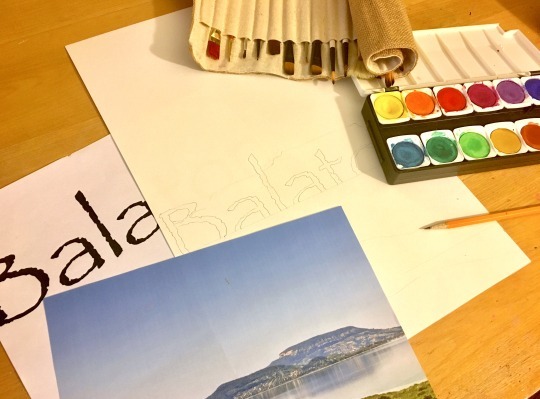
Stay tuned for new covers every day of the month!
I want to mention there is a Feedback Form open now that will allow you to send in your valuable comments, concerns, suggestions, and more about the 30 Covers, 30 Days program.
Cover Designed by Roshanak Keyghobadi
Roshanak Keyghobadi is an artist, teacher and independent scholar who writes regularly about contemporary art and artists with special focus on design and typography. She holds a doctoral degree in Art and Art Education from Columbia University and her MFA and BFA are both in Graphic Design. She blogs at artCircle and displays her artworks on her Instagram page @roshanakkeyghobadi.
November 24, 2018
30 Covers, 30 Days 2018: Day Twenty-Four
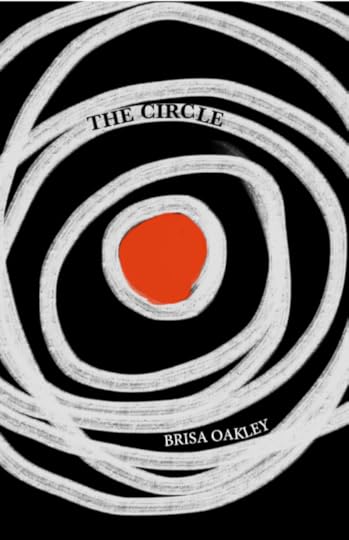
Every November, during National Novel Writing Month, thirty professional designers volunteer to create book cover art inspired by novels being written by aspiring authors from around the globe. Why? To encourage new, diverse voices, and help build a more creative world.
30 Covers, 30 Days is presented in partnership with designer and author Debbie Millman. Read more about these NaNoWriMo 2018 novels-in-progress, and the cover designers, below.
The CircleA Science Fiction novel being written this November by YWP participant Brisa Oakley in Peru.
The city of Freim had been the perfect hometown for over 300 000 people 10 years ago. Everyone lived in peace and harmony until a new dark emperor came and made its goal to conquer all of Freim. Since then, the city has split in two: The Supporters, known as “Aken”; and the Resistance. The latter unified itself and formed a secret organization known as “The Circle”, who recruited people to fight against them. Everything was as good as it could be in the Circle and with the Aken until two new forces appeared, took the reigns of each side and changed everything.
Stay tuned for new covers every day of the month!
I want to mention there is a Feedback Form open now that will allow you to send in your valuable comments, concerns, suggestions, and more about the 30 Covers, 30 Days program.
Cover Designed by Debbie Millman
Debbie Millman is the host of the award-winning podcast Design Matters, the world’s first podcast on design; Chair of the first ever Masters in Branding Program at the School of Visual Arts, a curator for the Museum of Design, a contributor to Print Magazine, President Emeritus of AIGA, and the author of six books on design and branding. Follow her on Instagram and Twitter @debbiemillman.
Author photo by Chase Jarvis.
November 23, 2018
5 Ways to Raise the Stakes of Your Writing

Some of us find words flowing easily and readily; others need the extra push of a deadline to complete a scene. By creating pressure and raising the stakes of your writing, you can cross the finish line! Today, writer Erin Townsend shares her tips for putting the heat on your writing:
Some people thrive under pressure, using the panic of the eleventh hour to propel themselves through their writing. This doesn’t always work as intended; if you’re anything like me, it’s easy to watch December 1 get closer and convince yourself you’ll make up for lost time later on. Sometimes, finding ways to manufacture that kind of last-minute pressure in your everyday writing helps keep your word count on track. Inventing your own stakes can be essential in keeping your writing routine in line; but how do you create that pressure in the first place?
1. Enlist OthersCall over or visit a friend. They can read, work on their own project, or marathon Netflix shows on their laptop with earbuds in. You can even Skype with far-away friends; in either case, they can keep you in line when you get distracted. If you can’t get together in person, tell a friend or family member the word count you intend to reach by the end of the day. Yell your goal into the void of Facebook. Getting other people involved fosters a sense of obligation—use it to your advantage.
2. Make the “Write” EnvironmentInstead of writing in isolation, branch out to a cafe, or better yet, a library. Chances are, you’ll be surrounded by a bunch of people furiously typing on their MacBooks, looking studious and productive. Even if they’re just scrolling through Facebook, the atmosphere of quiet concentration can push you buckle down on your own work.
3. Use TechnologyThe most dangerous writing app will delete your words if you stop writing for too long. You can set a time limit or word goal—good for sprints and writing through a block. And don’t forget about browser extensions! Try a website blocker to restrict everything for an hour on your lunch break or before bed, and write as much as you can before your access comes back. You can even set up restrictions ahead of time, leaving less of a chance for you to weasel out of your own plans.
4. Invent Time RestraintsHit up a cafe an hour before it closes, and use that pressure to get as much work done as you can before they kick you out. Bring your laptop somewhere without a charger, like the library, a park, or even a different room in your apartment, and write against the clock (remember to save your work!). Make a conditional agreement to attend an event or social gathering, with the caveat that you’ll write a page or two before you go. Even if you don’t hit your goal, the illusion of a time constraint gives you motivation to concentrate.
5. Add Challenges to Routine ActivitiesCooking something for 45 minutes? Challenge yourself to write a certain number of words in that time. On hold with Comcast again? Write for three hours until you reach a live person. Pop your tea into the microwave and try a 200 or 300-word sprint. If you’re ordering food, bang out a few pages before the delivery driver calls. Throw in a load of laundry and write until it’s done—bonus points if you’re writing in an actual laundromat. Open-ended, personal challenges often result in more work than you think they will, and can be more interesting than trudging up to a word count.

Erin Townsend writes from New Haven, Connecticut, where she co-organizes a writing and audience feedback series entitled Local Lit @ Lotta. Her work has received the Jennie Hackman Award for Short Fiction and has been published in the Long River Review. Currently she is working on her first short story collection. In her spare time, when she isn’t traveling around with her partner, Erin reads books about space and drinks weird beer.
30 Covers, 30 Days 2018: Day Twenty-Three
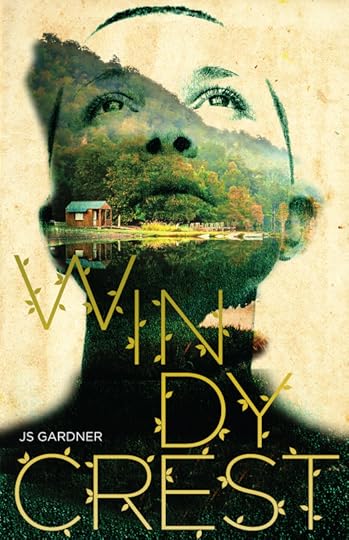
Every November, during National Novel Writing Month, thirty professional designers volunteer to create book cover art inspired by novels being written by aspiring authors from around the globe. Why? To encourage new, diverse voices, and help build a more creative world.
30 Covers, 30 Days is presented in partnership with designer and author Debbie Millman. Read more about these NaNoWriMo 2018 novels-in-progress, and the cover designers, below.
WindycrestAn Adventure novel being written this November by NaNo participant JS Gardner in the United States.
Isla has a story - a telling. It is one that she has kept close since she was young. However, as the darkness in her mind finally begins to eclipse it, she realizes that she must let it go - tell it - before it becomes lost forever. So we embark with her on a journey through a mystical adolescence spent in the forest from whence all tellings come. A place hidden through the Crepe Myrtle behind her grandparents rural Oklahoma home. A place that is ruled by The Master of Tellings who decides which stories are allowed to enter the world. A place called Windycrest.
Cover designer Tan Le shared some sketches from the design process:
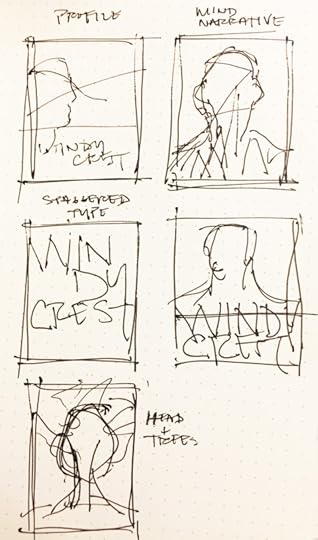
Stay tuned for new covers every day of the month!
I want to mention there is a Feedback Form open now that will allow you to send in your valuable comments, concerns, suggestions, and more about the 30 Covers, 30 Days program.

I’ve been a graphic designer for 25+ years, having run my own studio, and then working as a creative director for some of the world’s biggest network agencies. I’ve had the chance to design and tell stories for some great brands, from Coca-Cola and Microsoft, to smaller gems that are local favorites. I will always have a love of traditional print, but as the industry has evolved, so has my work. Whether it’s digital experience or large retail experiences, the key is to visually communicate something meaningful and make a connection through design. I also believe in supporting the profession, and am honored to be recognized as an AIGA Fellow. Personally, I’ve always been an avid reader, a film buff, love all things about science and nerd culture, and treasure time spent with my wife and smart kids in Dallas. You can find me online at tanle.designer.
November 22, 2018
“Practice listening to your own voice.” —Francesca Lia BlockOur...
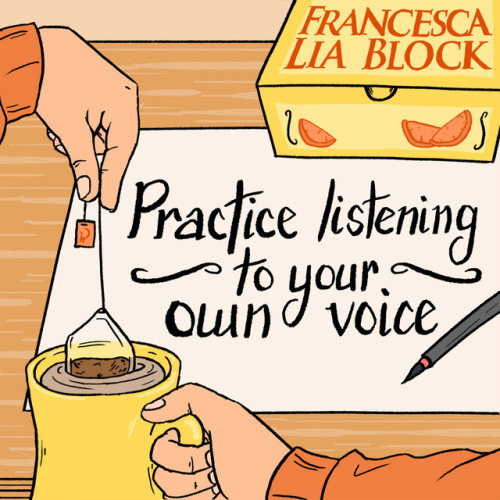
“Practice listening to your own voice.” —Francesca Lia Block
Our amazingly multi-talented Customer Service Captain, Wesley Sueker, has illustrated quotes from this year’s Pep Talks! Check out Wesley’s other work on DeviantArt, and read the rest of Francesca’s pep talk here.
Chris Baty's Blog
- Chris Baty's profile
- 62 followers



